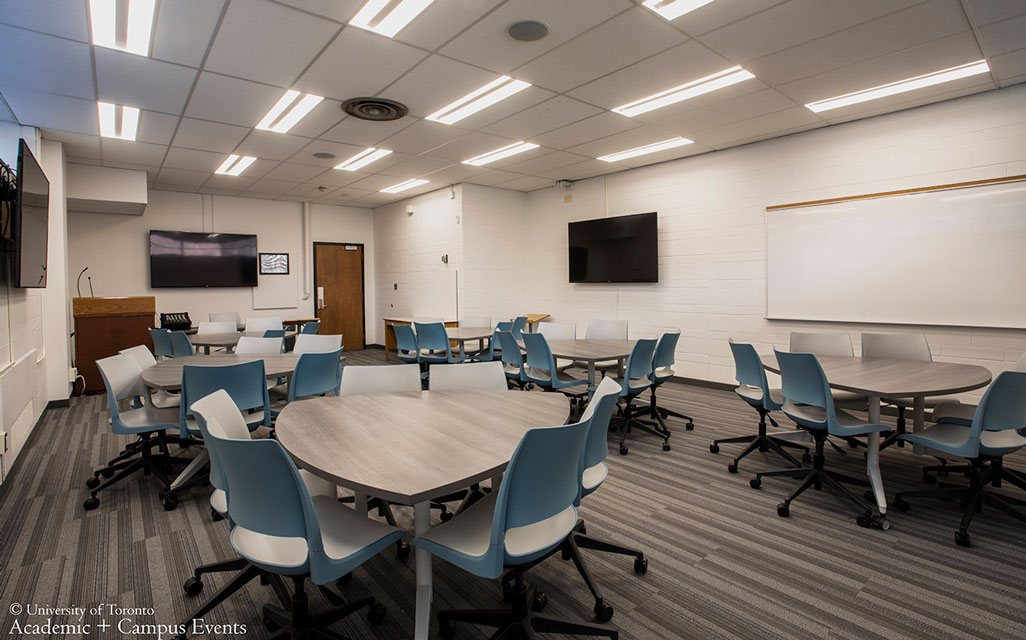By Darren Clift, Writer
Each cohort of students arrives at UofT with unique considerations and learning style preferences. Today’s students are digital natives; technology is a fundamental tool for socialization and self-improvement in their lives. Since students’ needs have changed, classrooms and teaching methods must adapt. A standard room with standard desks might not favour learning, while a standard lecture style might distract rather than inspire.
At a historic and complex institution like UofT, redesigning learning can be a challenge. The Transforming the Instructional Landscape (TIL) project offers a potential solution by interrogating and integrating the perspectives of all stakeholders—students, instructors, and staff—to transform educational spaces and practices for modern students’ needs. By working with Academic + Campus Events and the Centre for Teaching Support and Innovation, the Innovation Hub is building a process for classroom redesign that integrates learning, pedagogy, and technology. Redesign is more than a fresh coat of paint; it’s a culture built from spaces and those who use them.
This is the third year of the Innovation Hub’s involvement with TIL. Its TIL Design Team, led this year by Master of Information student Jason Batten-Carew, is reviewing the efforts of the past two years and building a human-centred design process for classrooms, with a focus on stakeholder engagement, to be used in future redesigns. The team will interview various groups and stakeholders affected by TIL’s rollout so far, asking questions such as “How did you get involved with TIL?” and “Would you change anything about the classroom design process?” Designing learning spaces for students with varied educational expectations, and teaching spaces for instructors with different styles, is a challenge. Consistently ensuring that all stakeholder voices are heard, and all needs uncovered, requires a dedicated approach, which the team will create this year.
This approach could assist UofT’s considerable commitment to Active Learning Classroom development. These classrooms will support modern teaching pedagogies that economize student learning. Already this fall, the Faculty of Information opened a Technology Enhanced Academic Learning classroom, designed by UX professor Olivier St-Cyr, containing ten display screens with touch functionality and collaboration features to facilitate design critiques, team projects, and more. This space is now one of the university’s most technologically advanced classrooms.
Many factors are involved in education transformation: learning styles, teaching styles, cultural and technological changes. None of these exists in a vacuum, and by better understanding how physical space intersects with all of them, TIL can help transform education at UofT.

0 comments on “Transforming Educational Spaces at UofT”